A match made in history: The Senate and Union Station
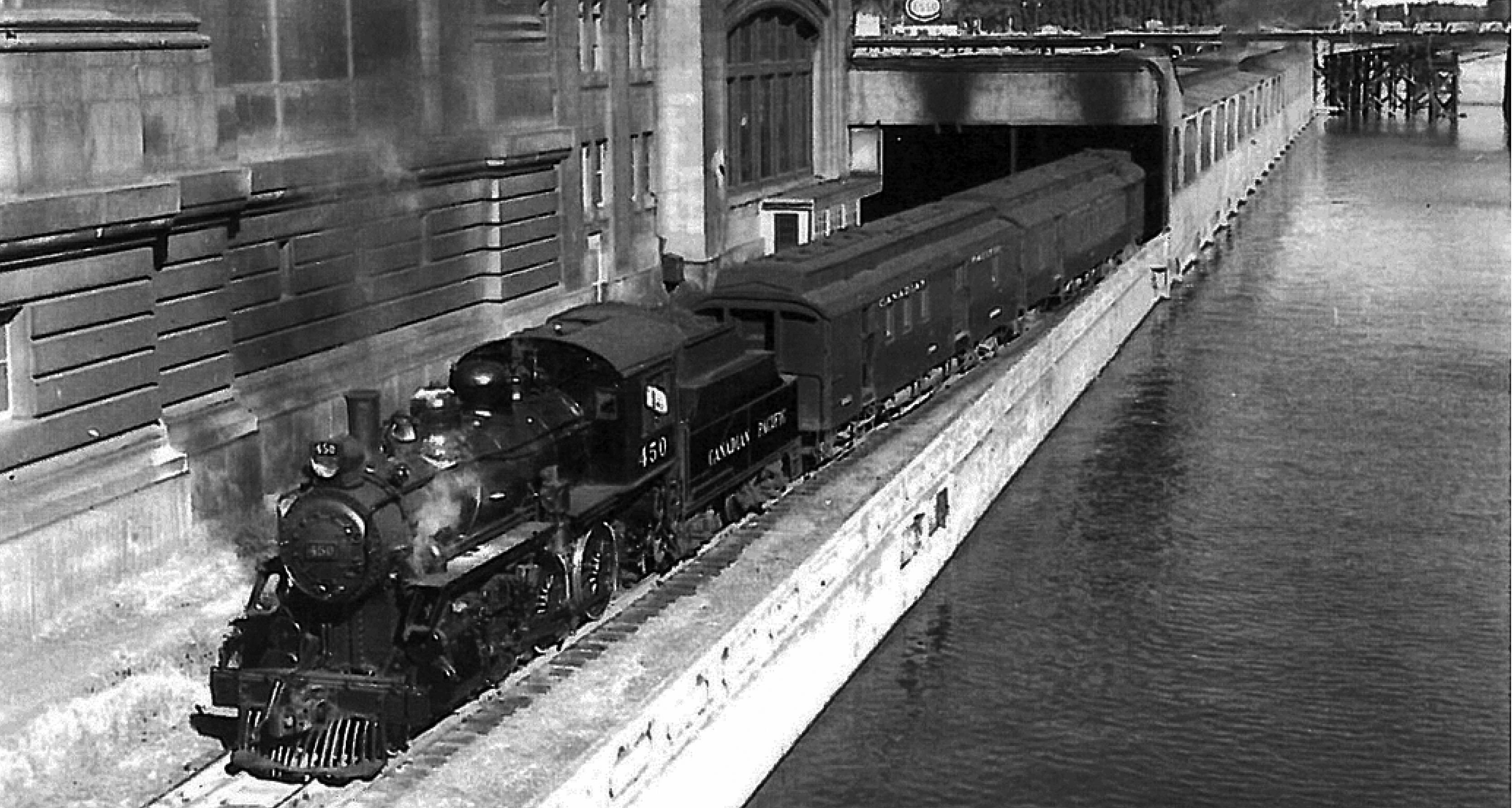
In February 2019, the Senate moved to the Senate of Canada Building, a former train station built in 1912. The Senate is expected to occupy its temporary location for at least 10 years while Parliament’s Centre Block — the Senate’s permanent home — is rehabilitated.
Although Centre Block is shuttered for rehabilitation work, Canadians can still experience its art and architecture through the Senate’s immersive virtual tour.
There’s something poetic about the Senate of Canada coming together with a piece of railroad history. No two ideas were as instrumental in securing the Confederation of Canada in 1867 as the Senate and the railroads. Now, a twist of fate has put them together.
While its permanent home on Parliament Hill is closed for renovations, the Senate has moved into Ottawa’s historic Union train station, the stately building across the street from the Chateau Laurier hotel.
Senator Serge Joyal said there is “great historical symbolism” to the Senate moving into a former train station.
When the Fathers of Confederation negotiated the terms for Canada’s creation, two promises helped seal the deal. They created the Senate to ensure Canada’s regions were represented in Parliament. And the promise of linking what had been British colonies together by rail offered the security the provinces needed.
“Without the railway uniting the various parts of Canada, bringing all Canadians to share the commitment to build the country, there would not have been a country,” Senator Joyal said.
 There has been a long connection between the Senate and Canada’s railway history. The first Senate bill of each parliamentary session is always S-1, An Act respecting railways.
There has been a long connection between the Senate and Canada’s railway history. The first Senate bill of each parliamentary session is always S-1, An Act respecting railways.
“It shows, essentially, the symbolism that, without railways, there would not have been any Canada,” Senator Joyal said. “The importance of the country is rooted in its railway.”
The traditional naming of Bill S-1 “is to remind us that we have the challenge to maintain communications and equality of development among the various parts of Canada,” Senator Joyal explained.
Union Station was constructed in 1912 by the Grand Trunk Railway, a Montreal-based company that built railroads from Quebec to British Columbia and throughout the western United States. It got scooped up by Canadian National Railway (CN) in 1923 as two companies came to dominate the country’s rail business – CN and the Canadian Pacific Railway (CPR).
The CPR completed the dream of Canada’s first prime minister, Sir John A. Macdonald, to have a railway from sea to sea. As it happens, it was also Macdonald who coined the phrase “chamber of sober second thought” to describe the Senate’s role in Parliament.
In 1912, the Grand Trunk Railway built its station on Rideau St., beside the Rideau Canal. Across the street, it built the iconic Chateau Laurier hotel, named for then-prime minister Sir Wilfrid Laurier.
Arriving passengers disembarked from their train and walked into what architects called the “procession” — an impressive passageway that had Corinthian columns, vaulted coffered ceilings and marble-patterned ceiling arches.
Travellers passed into the concourse, the arrivals area that is now the Senate Chamber. A skylight set in a 15-metre ceiling threw a lattice of light and shadow across an area teeming with people.
Upper-crust travellers took a tunnel from the waiting room to the Chateau Laurier. Most, however, climbed the palatial staircase, headed north through a corridor and emerged at street level with the hotel facing them.
Union Station was in service for 54 years, until 1966, when Ottawa’s train station moved to its present location in the city’s east end.
An earlier version of this article was published on March 30, 2017.
This article is part of a series about the Senate of Canada’s move.
 Ottawa’s Grand Trunk Central Station, later renamed Union Station, shortly after it was built in 1912. In the foreground is the single rail line that continued north along the Rideau Canal, eventually crossing the Ottawa River over the Alexandra Bridge to Quebec. (Photo credit: Library and Archives Canada)
Ottawa’s Grand Trunk Central Station, later renamed Union Station, shortly after it was built in 1912. In the foreground is the single rail line that continued north along the Rideau Canal, eventually crossing the Ottawa River over the Alexandra Bridge to Quebec. (Photo credit: Library and Archives Canada)
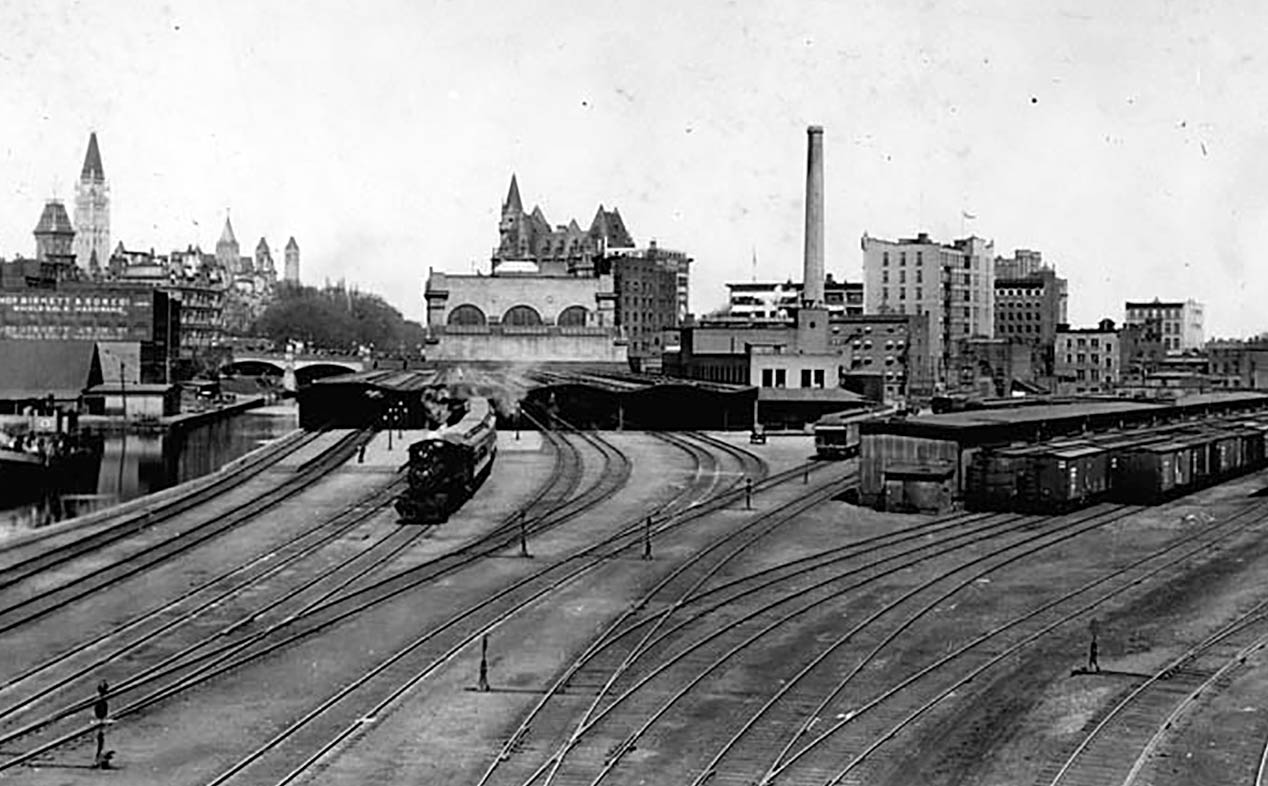 Passenger rail lines used to run into downtown Ottawa along the Rideau Canal. Passengers disembarked at Union Station, now the Senate of Canada Building, under the steel-and-glass train sheds in the centre of the photo. An adjacent freight railyard occupied what is now the Rideau Centre shopping mall. (Photo credit: Library and Archives Canada)
Passenger rail lines used to run into downtown Ottawa along the Rideau Canal. Passengers disembarked at Union Station, now the Senate of Canada Building, under the steel-and-glass train sheds in the centre of the photo. An adjacent freight railyard occupied what is now the Rideau Centre shopping mall. (Photo credit: Library and Archives Canada)
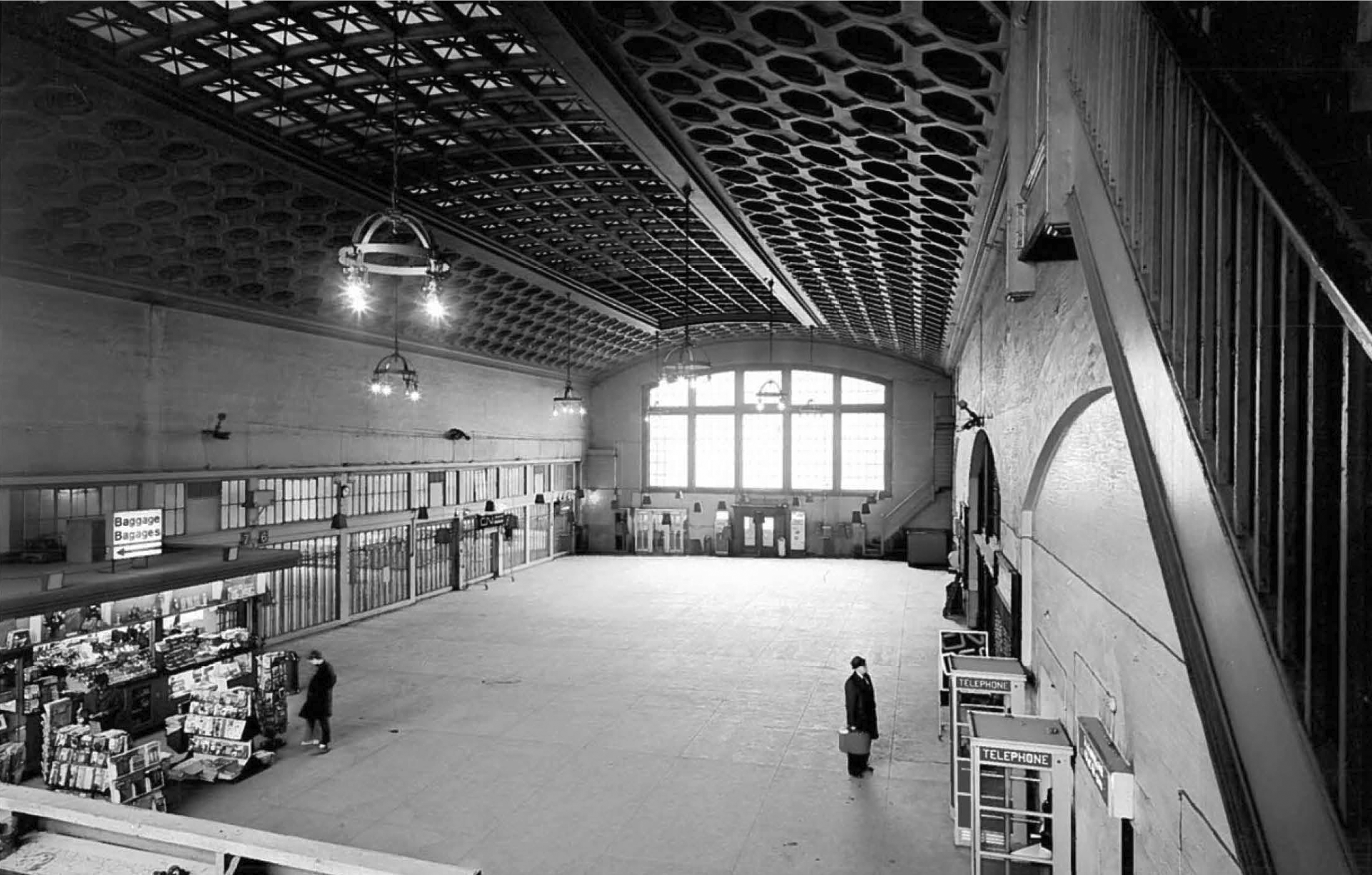 The concourse was the last chance for passengers to buy a magazine or make a phone call before boarding their train. The high-ceilinged hall became the temporary Senate Chamber in 2019. (Photo credit: Library and Archives Canada)
The concourse was the last chance for passengers to buy a magazine or make a phone call before boarding their train. The high-ceilinged hall became the temporary Senate Chamber in 2019. (Photo credit: Library and Archives Canada)
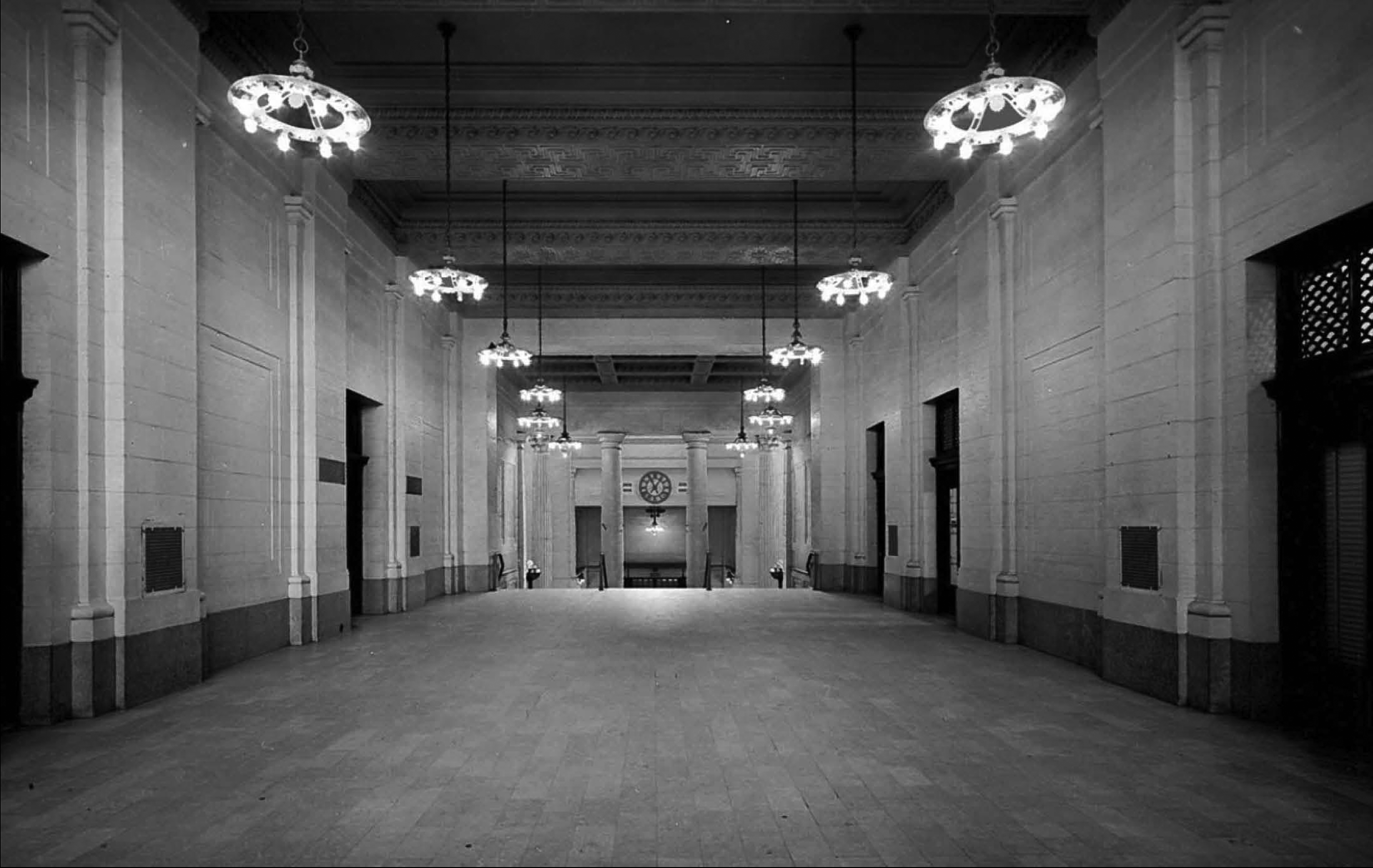 A long low-ceilinged corridor funnelled passengers from Union Station’s entrance on Rideau Street to a flight of stairs that led down into the general waiting room. (Photo credit: Library and Archives Canada)
A long low-ceilinged corridor funnelled passengers from Union Station’s entrance on Rideau Street to a flight of stairs that led down into the general waiting room. (Photo credit: Library and Archives Canada)
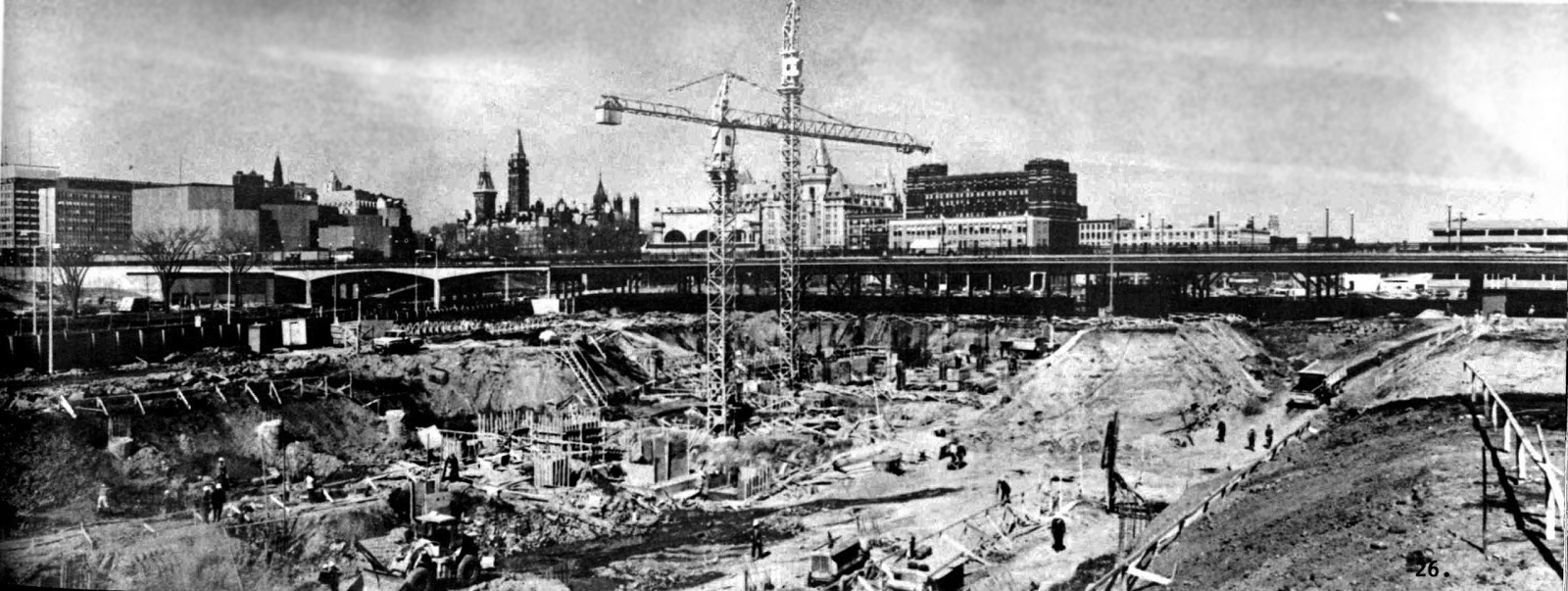
The rail lines along the Rideau Canal were excavated in the 1960s and replaced with a scenic parkway, today’s Colonel By Drive. (Photo credit: Library and Archives Canada)


